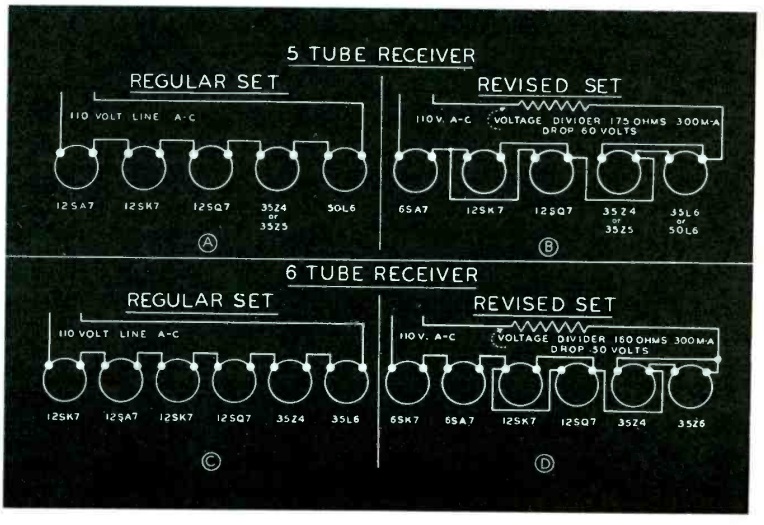 Seventy-five years ago, the radio serviceman had to deal with wartime parts shortages, and this often called for creativity. As with many such magazines of the era, the May 1943 issue of Service magazine gave some pointers.
Seventy-five years ago, the radio serviceman had to deal with wartime parts shortages, and this often called for creativity. As with many such magazines of the era, the May 1943 issue of Service magazine gave some pointers.
In most areas, the common tubes for “All American Five” receivers had become unobtainium. If a tube went bad, something had to be substituted. The diagram here shows how the serviceman could deal with a shortage of 12SA7 tubes. A 6SA7 might be available, and was identical in all respects other than filament voltage. In these AC-DC sets, the filaments were wired in series, and the filament voltages had to add up to 120 volts. If the 6-volt tube was simply plugged in, the filament would quickly burn out.
The solution is shown above. A resistor (such as a “curtain burner” cord) is placed in series with the filaments, dropping the total voltage in half. The problem, of course, is that the other tubes still required their original voltage. This was solved by pairing up the other tubes, wiring two tubes in parallel, and then putting all of the pairs in series.
Other pointers addressed in the article included making delicate repair of speaker windings and IF coils. In most cases, the break was close to one end, so the patient serviceman could locate it and solder in a new lead. Volume controls were also hard to come by, and the article discussed how to clean and repair them.
The article noted that these kinds of procedures were necessary not just to keep revenue flowing in, but as a public service to keep America’s radios in service to bring in war news and entertainment.
